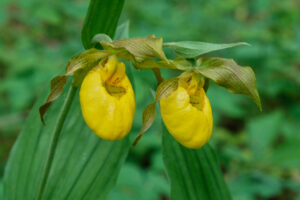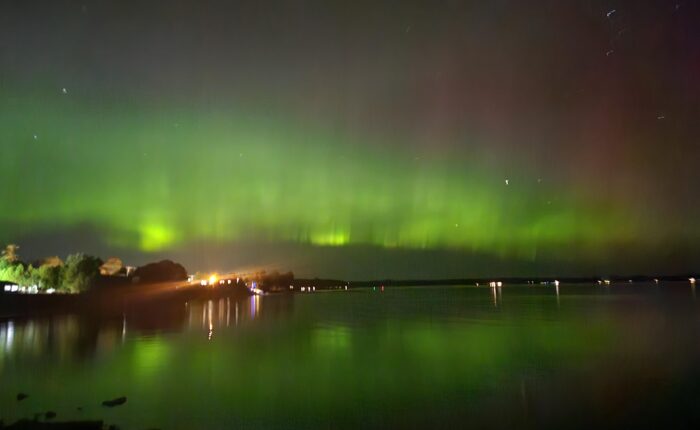
Door County’s cherished peninsula extending into Lake Michigan, hosts a remarkable diversity of plant life shaped by its unique geography, climate, and geological history. The intersection of northern and southern species, coupled with the moderating influence of the surrounding waters, has created a botanical paradise worthy of exploration and preservation.
The peninsula’s diverse habitats—from shorelines and wetlands to forests and meadows—support an impressive array of vegetation that changes throughout the seasons. This essay explores the rich flora of Door County, highlighting notable plant communities, rare species, and conservation efforts that protect this natural heritage.
Distinctive Habitats and Their Flora
Door County’s location between Green Bay and Lake Michigan creates a microclimate that supports an impressive diversity of plant life. The peninsula’s most distinctive botanical features include:
Shoreline and Dune Communities
The expansive shorelines of Door County feature remarkable plant communities adapted to sandy, windy conditions. Beach grass (Ammophila breviligulata) plays a crucial role in stabilizing dunes, while beach pea (Lathyrus japonicus) adds splashes of purple along the coast. The rare Pitcher’s thistle (Cirsium pitcheri), an endangered species found only in the Great Lakes region, makes its home in these dynamic environments, showcasing delicate silvery-blue foliage and pale flowers.
Limestone Bluffs and Alvars
Perhaps Door County’s most unique botanical habitats are its alvars—rare ecosystems characterized by thin soil over limestone bedrock. These harsh environments support specialized plant communities including:
– The dwarf lake iris (Iris lacustris), Wisconsin’s state wildflower and a federally threatened species
– Lakeside daisy (Hymenoxys herbacea), a bright yellow endangered flower
– Alaska rein orchid (Platanthera unalascensis), a rare orchid found in only a few Wisconsin locations
The Niagara Escarpment, running through the peninsula, creates dramatic limestone cliffs where specialized plants like walking fern (Asplenium rhizophyllum) and bulblet fern (Cystopteris bulbifera) thrive in rocky crevices.
Northern Hardwood Forests
Door County’s interior forests blend northern and southern species, creating a unique botanical tapestry. Sugar maple (Acer saccharum), American beech (Fagus grandifolia), and yellow birch (Betula alleghaniensis) form a canopy over diverse understory plants. Spring brings spectacular wildflower displays featuring:
– Trilliums (Trillium grandiflorum, T. erectum)
– Dutchman’s breeches (Dicentra cucullaria)
– Hepatica (Hepatica americana)
– Jack-in-the-pulpit (Arisaema triphyllum)
– Wild ginger (Asarum canadense)
Wetlands and Boreal Forests
The peninsula’s numerous wetlands support distinctive plant communities. Cedar swamps feature northern white cedar (Thuja occidentalis) alongside tamarack (Larix laricina) and black spruce (Picea mariana), creating environments more typical of Canada’s boreal forests. These wetlands harbor orchids including the showy lady’s slipper (Cypripedium reginae), yellow lady’s slipper (Cypripedium parviflorum), and the rare ram’s head lady’s slipper (Cypripedium arietinum).
Seasonal Botanical Highlights
Door County’s flora presents a changing palette throughout the growing season:
Spring Ephemerals
The woodland floor erupts with spring ephemerals that complete their life cycles before the tree canopy fills in. Trout lilies (Erythronium americanum), spring beauties (Claytonia virginica), and bloodroot (Sanguinaria canadensis) take advantage of early spring sunlight.
Summer Blooms
Summer brings vibrant displays of wildflowers in Door County’s meadows and roadsides. Black-eyed Susans (Rudbeckia hirta), purple coneflowers (Echinacea purpurea), and various asters create colorful tapestries. The county’s famous cherry and apple orchards also bloom in spring, creating spectacular scenery that draws visitors from across the Midwest.
Fall Splendor
Autumn transforms Door County into a mosaic of color as maple, birch, and aspen trees display brilliant red, orange, and yellow foliage. Asters and goldenrods provide late-season nectar sources for pollinators preparing for winter.
Conservation Efforts and Protected Areas
Door County’s botanical treasures benefit from significant conservation efforts. The peninsula hosts several protected areas that preserve its diverse plant communities:
– The Ridges Sanctuary, Wisconsin’s oldest nature preserve, protects a series of sand ridges and swales harboring numerous rare plants
– Peninsula State Park encompasses over 3,700 acres of diverse habitats
– Newport State Park features undeveloped shoreline and northern forest communities
– The Nature Conservancy’s Mink River Estuary preserves one of the Great Lakes’ most pristine estuaries
These conservation areas not only protect rare plants but also provide opportunities for public education about Door County’s botanical heritage.
Challenges and Threats
Despite conservation efforts, Door County’s flora faces several challenges:
– Invasive species like garlic mustard (Alliaria petiolata), common buckthorn (Rhamnus cathartica), and Phragmites threaten native plant communities
– Development pressure reduces available habitat for sensitive species
– Climate change alters growing conditions, potentially shifting the range of northern species northward
Local organizations, including the Door County Land Trust and The Ridges Sanctuary, work to address these challenges through habitat restoration, invasive species removal, and public education initiatives.
Door County’s flora represents a remarkable botanical treasure reflecting the peninsula’s unique geography and natural history. From rare orchids in cedar swamps to spring ephemerals carpeting forest floors, the plant communities of Door County create a living tapestry that changes with the seasons. Efforts to conserve these botanical riches ensure that future generations can experience the natural heritage of this special place. Visitors and residents alike have the opportunity to witness and appreciate Door County’s floral abundance, whether hiking through preserved natural areas or simply enjoying the seasonal transformation of the landscape.

